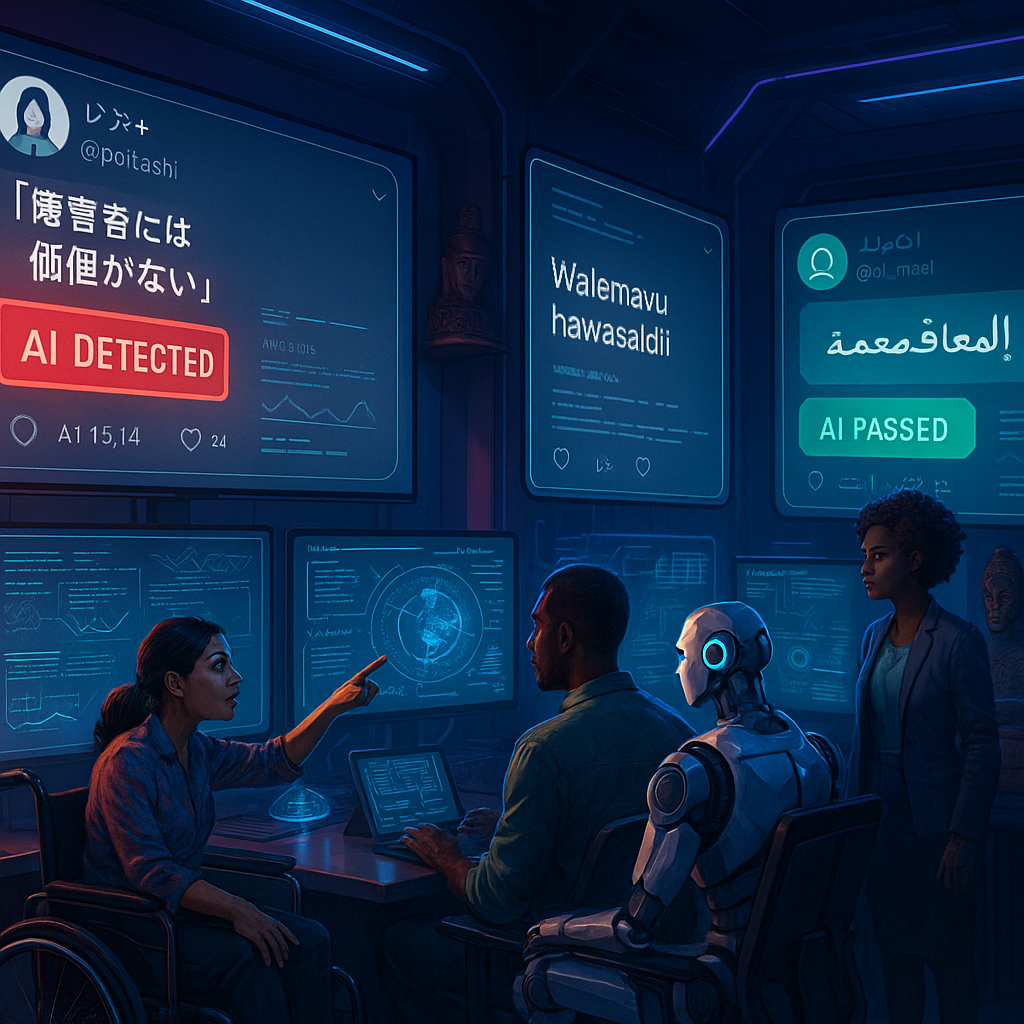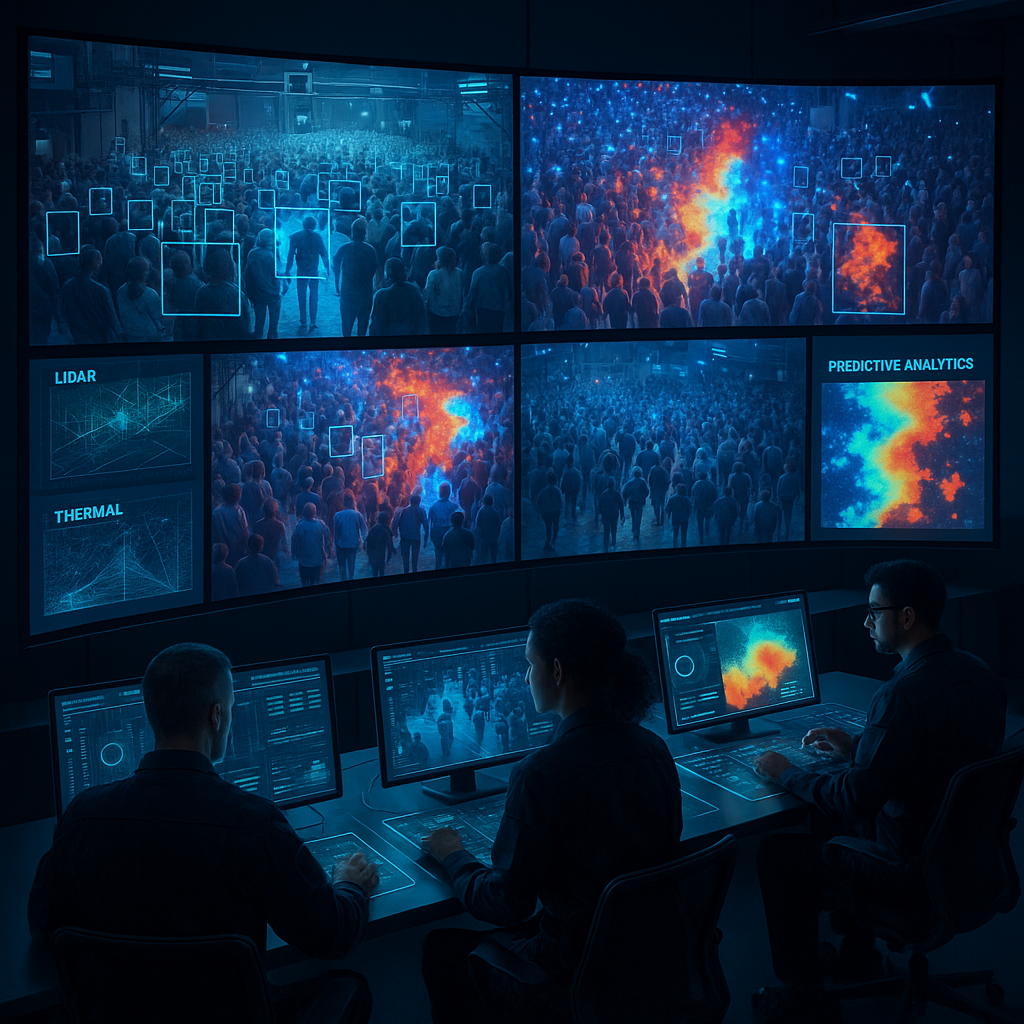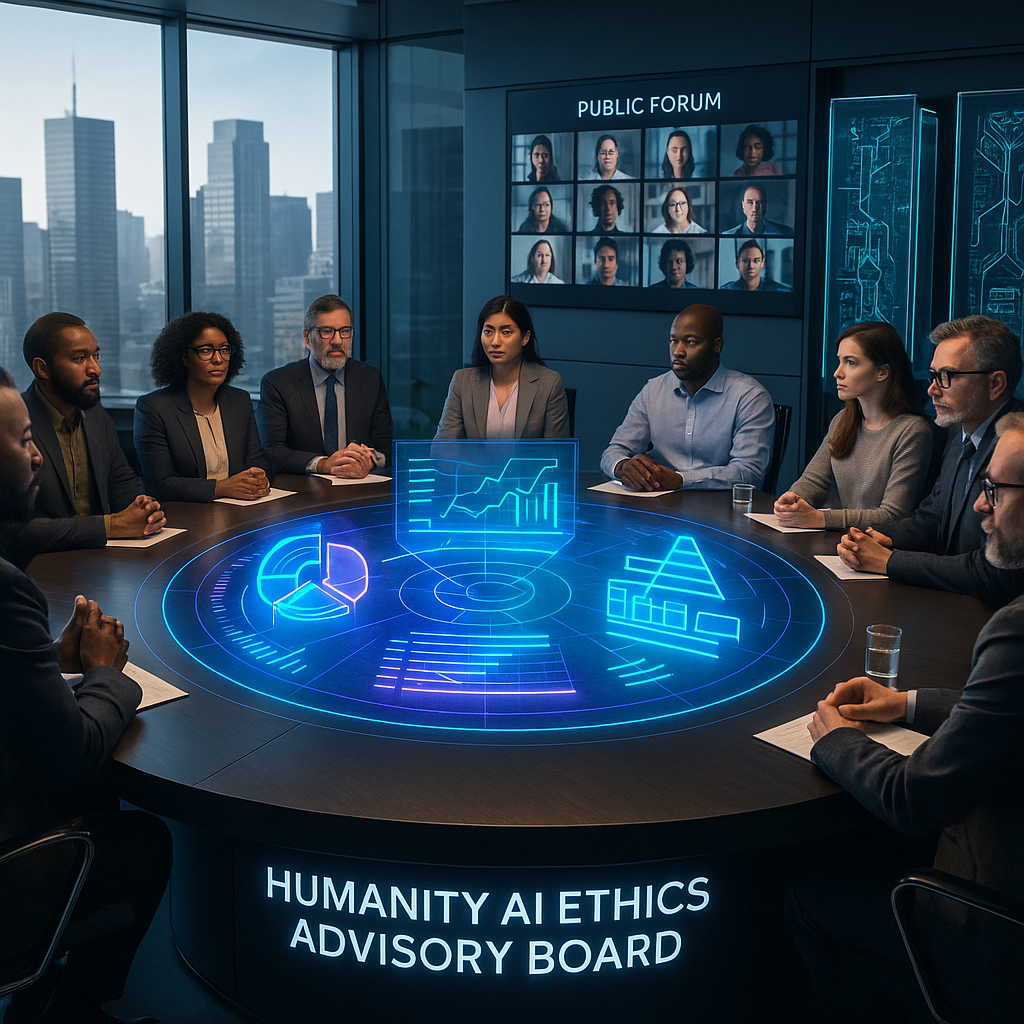Key Takeaways
Smart city ambitions are colliding with a changing climate, and the digital leap from static data dashboards to truly intelligent urban management is happening before our eyes. At the center of this evolution are AI-powered digital twins. These are not mere passive simulations but dynamic, predictive engines that empower urban leaders to model, anticipate, and even prevent climate risks before they manifest. The insights below illustrate how the convergence of climate AI and digital twins is equipping cities to become not just smarter, but fundamentally more resilient and sustainable.
Cities are moving from rigid, static models to living digital replicas. Digital twins create interactive, data-rich simulations that mirror a city’s physical environment and infrastructure in real time, enabling constant monitoring and scenario testing. With this foundation, leaders can see the pulse of the city as it beats, continuously adapting to new threats and opportunities.
AI transforms monitoring into anticipation. By equipping digital twins with advanced climate AI, cities can shift from simply observing events to actively forecasting them. This transition enables modeling of extreme weather impacts, emission trends, and intervention outcomes before disaster strikes, sparing countless resources and lives.
Urban intelligence evolves from a reactive stance to a preventative one. The fusion of AI with digital twins enables cities to move from responding to crises after they occur, to proactively managing and even preventing climate risks. This marks a new era where the default is not damage control but resilience by design.
Stay Sharp. Stay Ahead.
Join our Telegram Channel for exclusive content, real insights,
engage with us and other members and get access to
insider updates, early news and top insights.
 Join the Channel
Join the Channel
Seamless integration is key. Advanced digital twins are engineered to coexist with legacy infrastructure and smart city platforms. Cities combine data from IoT sensors, public utilities, satellite imagery, and more, producing holistic, actionable intelligence that supports coordinated urban management.
AI-powered city modeling unlocks hidden efficiencies and sustainability. These technologies reveal opportunities for smarter spatial planning, facilitate zero-energy or carbon-neutral developments, and optimize resource allocation. The ripple effect supports projects ranging from improved transportation corridors to greener public buildings and sustainable neighborhoods.
Cost savings and risk reduction reach city scale. Digital twins for climate resilience translate complex insights into lower emergency response costs, longer asset life cycles, and new justification for investing in future-ready infrastructure. Smart investments are guided by precise data, supporting both immediate action and long-term urban planning.
Real-world pioneers are lighting the global path forward. Cities such as Singapore, Helsinki, and Rotterdam are already deploying climate-responsive digital twins to predict flooding, streamline energy usage, and design green corridors. Their successes provide playbooks for scaled adoption in urban centers worldwide.
These key takeaways prepare the ground for a deeper exploration of how digital twins and climate AI are revolutionizing urban management. This journey from reactive resilience to proactive climate foresight sets up the next stage: an in-depth look at the foundational technologies, integration strategies, and transformative case studies propelling tomorrow’s smartest, most resilient cities.
Introduction
In today’s urban landscape, no city can afford to simply track the weather; it must predict, adapt, and outthink it. Climate shocks such as flash floods and heatwaves are exposing the limits of traditional urban management, leaving unprepared cities scrambling in the aftermath. Enter a new era, where the promise of the smart city is not realized through dashboards alone, but through the real-time convergence of climate AI and digital twins. These are dynamic, high-fidelity, data-driven replicas of cities that let decision-makers anticipate and address risks before they escalate into full-blown crises.
By harnessing continuous simulation and predictive intelligence, AI-powered digital twins are shifting urban planning from a state of reactive firefighting to one of proactive, adaptive strategy. The upshot is smarter, greener urban environments, where resources are optimized, climate risks are managed, and sustainability is not an afterthought but an operating principle. As we delve into the technology and philosophy behind digital twins infused with climate AI, we uncover the emerging blueprint for resilient and regenerative urban life. This creates a foundation for the cities of tomorrow.
Digital Twin Foundations for Urban Climate Modeling
Core Components of City Digital Twins
Building robust digital twins for urban environments relies on integrating three essential layers. The first is the physical infrastructure layer, composed of IoT sensors, weather stations, and environmental monitoring systems that capture live data from every corner of the city. The second is the digital modeling layer, which constructs precise 3D representations using techniques such as LiDAR scanning, photogrammetry, and BIM (Building Information Modeling) data to create high-resolution environments for analysis. The final piece is the analytical engine. Here, AI models specifically trained on urban climate dynamics process incoming data to identify patterns, make predictions, and recommend interventions.
Major real-world initiatives show the potency of this architecture. For example, Singapore’s Virtual Singapore integrates more than 25 disparate data sources, modeling environmental impacts for over 160,000 buildings, achieving an impressive 93% accuracy rate for predicting urban heat island effects. This system handles more than three terabytes of sensor data daily across a distributed edge computing network, showcasing digital twins as interactive, living reflections of complex city life.
Data Integration Requirements
The success of climate-focused digital twins depends on a solid foundation of data integration. This requires establishing:
- Real-time sensor networks with reporting intervals measured in seconds or minutes
- Decades-spanning historical climate datasets, ideally covering 30 years or more
- High-resolution satellite imagery that is refreshed at regular intervals, such as quarterly
- Building-level energy consumption data collected via smart meters
- Traffic flow monitoring correlated with emission tracking and air quality metrics
Helsinki’s Digital Twin project illustrates what is possible. By merging hundreds of data streams (290 at last count) into a standardized climate modeling framework, the city supports both real-time monitoring and scenario planning. A flexible API layer allows new data sources to be plugged in with minimal disruption, while rigorous data governance ensures quality and compliance.
Other sectors are following suit. In healthcare, hospital digital twins combine building sensors, patient traffic data, and HVAC system metrics to optimize air quality and emergency readiness. In utilities, water management digital twins correlate pipe pressure readings with weather forecasts to better prevent floods.
AI-Powered Climate Analysis & Prediction
Machine Learning Models for Urban Climate
At the heart of climate-responsive digital twins are machine learning architectures capable of parsing immense and intricate data landscapes. Deep learning neural networks can decode the tangled webs of urban meteorological phenomena, while reinforcement learning models optimize responses to evolving conditions.
Core modeling tools include:
- Convolutional Neural Networks (CNNs) for capturing spatial relationships and pattern detection in city layouts and climate zones
- Long Short-Term Memory (LSTM) networks tuned to sequence and predict temporal climate trends
- Graph Neural Networks (GNNs) that map the interdependencies among infrastructure elements such as power grids or storm drains
- Transformer and hybrid models designed for high-dimensional, multi-variable forecasting to address the complexity of real-world urban dynamics
Barcelona’s Climate Twin is a prime example, using ensemble learning to accurately predict flooding events with 87% precision three days ahead. Their hybrid model integrates weather, land use, and infrastructure data, enabling city officials to take preemptive measures.
These modeling capabilities are now being adopted in other fields. In finance, AI-powered digital twins simulate how climate events could affect real estate portfolios and credit risk exposure. In agriculture, rural digital twins model weather’s impact on crop yield and supply chain logistics, informing more resilient cold storage and distribution systems.
Stay Sharp. Stay Ahead.
Join our Telegram Channel for exclusive content, real insights,
engage with us and other members and get access to
insider updates, early news and top insights.
 Join the Channel
Join the Channel
Predictive Analytics & Scenario Planning
Modern digital twins do more than reflect current conditions; they project myriad possible futures. Predictive analytics modules let cities simulate:
- The ripple effects of heat waves on vulnerable neighborhoods, hospitals, and utilities
- Flood risk progression under different rainfall scenarios or sea level rise
- Air quality shifts based on alternating traffic patterns and industrial activity
- Fluctuations in energy demand tied to weather extremes and seasonal cycles
- Infrastructure stresses on bridges, pipelines, or trenches under varying climate loads
By proactively running these simulations, cities can allocate resources where they’re needed most, developing contingency plans for high-risk sectors and shaping networked policy responses.
Rotterdam’s Digital Twin exemplifies the payoff: by modeling surge risk and deploying interventions preemptively, the city averted €2.4 million in flood damage. This shows that precise prediction directly translates to material savings and public safety.
In education, predictive digital twins help universities prepare for heat emergencies during key campus events. Legal departments in major cities run scenario models to forecast regulatory compliance issues under different climate regimes, helping ensure new policies can withstand future scrutiny.
Implementation & Integration Strategies
Technical Infrastructure Requirements
True climate intelligence depends on a resilient technical backbone. Essential infrastructure includes:
- Edge computing devices with pervasive 5G connectivity for rapid, decentralized data processing
- Large-scale, cloud-based resources offering at least 100 petaflops to crunch incoming data and power AI inference
- Secure data lakes capable of storing a petabyte or more, safeguarding both historical and streaming data
- Advanced visualization engines that render millions of polygons for real-time, interactive digital twins
- Robust API frameworks and developer toolkits to enable system interoperability, integration, and further expansion
Copenhagen’s Climate Twin provides a template for execution, processing 4.5 million data points every hour with a distributed architecture, ensuring the system remains responsive under heavy loads and stress conditions.
Different industries also require custom infrastructure. For instance, in healthcare, hospital digital twins are integrating with on-premises edge devices to support privacy laws, while retail digital twins leverage cloud platforms to rapidly scale seasonal inventory planning.
System Integration & Interoperability
Technical prowess alone is insufficient if a digital twin remains an isolated silo. Seamless integration with current municipal and private systems is necessary to amplify digital twin impact. Priority integration points include:
- Emergency management and disaster response platforms
- Building automation and environmental control systems
- Urban transportation networks from street signals to railways
- Utility grid management, encompassing power, gas, and water
- Environmental and public health monitoring tools
Compliance with international standards such as ISO/IEC 21823 (for IoT integration) and ISO 37120 (for sustainable urban indicators) ensures interoperability across diverse platforms.
The Amsterdam Smart City initiative underscores these principles. By embedding digital twins deeply within emergency systems, the city achieved a 40% improvement in response times. This benchmark is spurring further integration across police, medical, and transit networks.
Similar concepts are emerging in other domains. In higher education, campus digital twins integrate with legacy A/V and security systems to improve crowd management and emergency readiness. Financial district twins connect with fintech transaction monitors to forecast disruptions from climate-driven infrastructure outages.
Operational Considerations & Challenges
Data Quality & Governance
The value of climate digital twins is tethered to the reliability of their data. Effectively maintaining accurate climate models requires robust protocols:
- Automated real-time data validation to catch errors at the source
- Periodic sensor calibration to guard against drift and degradation
- Legal and ethical frameworks for data privacy and compliance, ensuring citizen trust
- Automated quality assurance checks for AI model training and inference streams
- Version tracking and rollback for digital twin instances, supporting system reliability and continuous improvement
Boston’s Climate Ready Twin demonstrates what is possible, employing blockchain-based data validation to guarantee 99.9% data accuracy while staying fully compliant with GDPR and local privacy laws.
This focus on data integrity is inspiring cross-industry adoption. In environmental science, forestry management twins are building similar audit trails to validate land use and conservation data. In consumer-facing contexts, retail digital twins ensure pricing and product recommendations are data-verified and privacy-respecting.
Resource Requirements & ROI Analysis
Launching and sustaining a digital twin ecosystem is no small endeavor. Typical investments include:
- Initial deployment expenditures ranging from $5 million to $15 million for infrastructure and setup
- Ongoing annual maintenance costs at 15–20% of the total implementation value
- Comprehensive team training, with up to 300 hours per technical team member for upskilling and system operation
- Scheduled maintenance for distributed IoT sensor networks to preserve data fidelity
- Continuous AI model retraining as urban conditions evolve, ensuring long-term relevance and utility
While the upfront outlay is significant, cities reap substantial long-term value. Vienna’s Digital Climate Twin generated a 300% return on investment in just three years by improving resource allocation and mitigating the impact of extreme weather events. These outcomes resonate with both public administrators and taxpayers.
Similar business cases are materializing elsewhere. In healthcare, hospital digital twins reduce emergency downtime by 25%, justifying tech upgrades through operational savings. In banking, climate risk twins help insurers recalibrate portfolios, supporting more accurate pricing and reducing catastrophic losses.
Advanced Applications & Future Developments
Emerging Technologies & Integration
The digital twin landscape is rapidly advancing, propelled by integration with next-generation technologies:
- Quantum computing delivers exponentially faster, more complex modeling scenarios, overcoming the limitations of even today’s supercomputers
- Augmented reality interfaces allow planners and citizens to explore climate interventions within an immersive, visually rich environment
- Autonomous AI adaptation equips digital twins to adjust policies and interventions without human intervention, accelerating emergency responses
- Blockchain ensures tamper-proof audit trails for data sharing and regulatory compliance
- Edge AI enables ultra-fast, real-time analysis for local incident detection and rapid system feedback
Dubai’s Future City initiative is pioneering these capabilities, using quantum-inspired algorithms to run climate simulations a hundred times faster than traditional methods. This is fundamentally altering the speed and certainty of decision-making.
The retail sector is exploring AI-powered twins that simulate climate-driven changes in demand, helping brands adapt their supply chains. Education initiatives are building AR-driven campus twins where students and staff visualize safety measures during heatwaves or storms.
Cross-City Collaboration & Knowledge Sharing
As digital twins proliferate, global cooperation becomes essential. Shared efforts include:
- Climate data repositories open to multiple municipalities, fostering regional learning and benchmarking
- Standardized modeling and simulation languages that let cities and partners share algorithms, datasets, and results
- Unified APIs to allow third-party tools and analytics to integrate across city boundaries
- Joint R&D and professional networks to accelerate innovation and skills transfer
- Best practice blueprints that can be adapted for local conditions to maximize impact
The C40 Cities Climate Leadership Group is at the vanguard here, connecting 15 global cities into a digital twin network that accelerates adaptation strategies by enabling code, data, and knowledge sharing on an unprecedented scale.
The benefits are not limited to the public sector. In supply chain management, clusters of companies in logistics hubs share digital twin data to optimize routing and warehouse efficiency in anticipation of climate disruptions. Environmental scientists collaborate on digital twin frameworks to model cross-border river basins and shared ecosystems.
Conclusion
Digital twins are fundamentally transforming how cities respond to the pressing realities of climate change. Through fusion of hyper-connected sensors, precise digital modeling, and advanced AI analytics, exemplars such as Singapore, Helsinki, and Barcelona have brought the once-futuristic notion of intelligent, adaptive urban environments into vibrant reality. What makes these projects stand out is not just technical sophistication (powerful cloud computing, ingenious neural networks, and agile edge processing), but the orchestration of massive, diverse datasets that are continuously distilled into strategic, actionable intelligence.
However, this transformation’s true significance reaches beyond mere technology. Without effective governance, consistent interoperability, and a steadfast commitment to ethical data stewardship, technical solutions risk becoming brittle or misplaced. The momentum gained from quantum leaps in processing power and cross-city knowledge exchange is pointing toward a future where digital twins become more than engineering marvels. They evolve into platforms for collective urban wisdom, embodying a dialogue between our cities and the “alien minds” of our own creation.
As climate risks escalate, the imperative for city leaders and innovators is clear: success will favor those who invest in adaptive strategies, prioritize ethical and inclusive governance, and remain open to lessons from peers both near and far. Whether through quantum-enhanced predictions, collaborative urban networks, or real-time system adaptation, the next era of city development belongs to those who not only respond to the changing world, but who actively shape it through foresight, courage, and the intelligent integration of technology. The real challenge for urban leaders is not whether to adopt these advancements, but how boldly and wisely they will leverage them to ensure vibrant, resilient cities for all.
AI agent architecture
AI alignment drift
intelligent feedback
AI origin philosophy





Leave a Reply